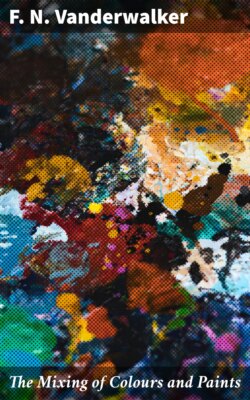Читать книгу The Mixing of Colours and Paints - F. N. Vanderwalker - Страница 9
ANILINE AND COAL TAR COLORS
ОглавлениеThese, too, are chemical colors, but they are taking such an important part in painters' materials that special mention is due them. Anilines are made from coal tar products, the by-products of coke ovens. Thousands of products come from the coal tar derivatives, but the aniline colors—dye stuffs—interest the painter chiefly.
The anilines resulting from chemical processes are very fine pigments in texture and have great coloring strength. These colors are precipitated upon inert base pigments like barytes and are sold as dry stain colors, as tinting colors, and for many other purposes. Some of the dull earth pigments, venetian red, ochre and others are toned or brightened by adding aniline colors to them.
The transparent and semi-transparent colors used by artists and decorators are such as have good staining and tinting ability but have little or no opacity, no ability to hide a surface.
The lakes are used as glaze coats or stain coats by mixing them with oils, varnishes and volatile liquids. The surface is first painted in opaque pigments for correct ground colors and the glaze coat is then put on as a finish to give depth of tone; to be wiped-out or highlighted in places.
Furniture and polychrome finishers use glaze colors over burnished gold and silver leaf or bronze covered surfaces. The auto and carriage painter uses them on fine body finishing to produce deep, lustrous colors. The artist uses lakes for floral and other hand decorations.
At first lake colors were made from natural vegetable and earth products. Few are so made today. Most lake colors used today are made from artificial substances, principally from coal tar dyes. They consist of every possible color, shade, tone and degree of permanency.
Aniline lake colors are used in much greater quantity by the printing ink industry and dye manufacturers than by the paint industry.
The first artificial aniline dyes called mauve and magenta were made by Perkins from coal tar in 1865. From that beginning a tremendous development has taken place. Now all the dyestuffs are of artificial aniline origin with but one or two exceptions. Natural madder lake and even natural indigo have been largely displaced.
The dyestuffs derived from coal tar products are legion. In the paint industry we hear most about aniline, alizarine red, nigrosene black, para red, chinolin and coal tar indigo, but there are many more.
The coal tar dyes come to the painter in dry powder form for use in mixing wood stains. Some are soluble in water, some in alcohol and some in oil. Many of the colors now used are toned with these aniline and other coal tar dyes.
